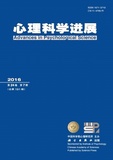In
recent years, with the change of national family planning policy, from “a
couple should only have one child” to “a couple can have two children”, the
two-child family will replace the one-child family as the main family form in
China. Under such circumstance, sibling conflict, which is regarded as a
serious topic, has come into focus gradually, and at the same time, how parents
deal with sibling conflict becomes an important problem to be solved urgently.
In view of the current situation that the definition of sibling conflict is
ambiguous, this paper preliminarily defines sibling conflict as the
incompatibility expressed by two or more people with the same biological
parents in their behaviors, goals or activities in an intact family, which is
usually characterized by quarrels and hostility, as well as aggression against
each other. The styles of parents’ intervention in sibling conflict usually can be divided into
child-centered strategies, control strategies, and nonintervention strategies.
To be more specific, child-centered strategies, especially mediation, has a
good intervention effect on sibling conflict; control strategies are correlated
with more severe sibling conflict; and there are positive and negative effects
of nonintervention strategies on sibling conflict. Therefore, when parents cope
with sibling conflict, they should try their best to use child-centered
strategies, rather than control strategies, and carefully use nonintervention
strategies. Furthermore, parents should flexibly use these three strategies to
intervene in sibling conflict according to different situations, rather than
apply these strategies rigidly. Based on family system theory, this paper
explores the effect of three kinds of family subsystems on sibling conflict.
Specifically, there are bidirectional influence mechanisms between parental
marital relationship, parent-child relationship, sibling relationship and
sibling conflict. Family system theory emphasizes that the family is viewed as
a hierarchically organized system, comprised of reciprocally influential
subsystems. Thus, it is not appropriate to solely consider the impact of each
subsystem on sibling conflict, but should recognize these impacts from a
unified and holistic perspective. Recognizing this, an integrated theoretical
hypothesis model is established among sibling conflict, parental intervention
styles on sibling conflict and family subsystems in order to further explore
the relationships among them in this paper. This hypothesis model points out
that parental marital relationship, parent-child relationship, sibling
relationship and sibling conflict interact with each other, thus there exist
multiple influence paths of family subsystems on sibling conflict. Moreover,
parental marital relationship, parent-child relationship and sibling
relationship can also affect sibling conflict by indirectly influencing
parental intervention styles on sibling conflict. This hypothesis model
emphasizes the complex relationship between sibling conflict and the whole
family system, which can be summarized as three points: multi-factor,
multi-path and multi-level. “Multi-factor” refers to the fact that sibling
conflict is affected by multiple factors simultaneously, rather than only by a
single factor. “Multi-path” means that the effect of a certain factor on
sibling conflict is multi-path, and these paths also intersect with the
influence paths of other factors on sibling conflict. “Multi-level” refers to
that there are different levels of factors affecting sibling conflict. Although
most of the influence paths in the model have been supported by empirical
studies, these empirical studies are mainly from United States and other
western countries, so the applicability of these influence paths needs to be
further confirmed in China. In addition, there still exist some controversial
or unconfirmed paths in the model, which need to be tested or verified by
future studies. Finally, future studies need to distinguish or integrate
between sibling conflict and its related concepts, focus on what factors will
affect the styles parents intervene in sibling conflict, and treat sibling
conflict from the perspective of development.




